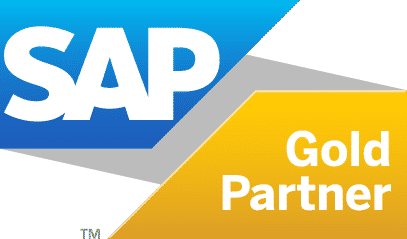
To keep up with the ever-changing, extremely dynamic market trends, many firms take to the upgradation or implementation of an SAP-ERP. Such practices can drastically improve the efficiency of your IT functions and make digitalization easier and more cost-effective presently and in the coming years.
But such implementations are not easy. Not every employee working in a firm is receptive and adaptive to a change, and that is where change management plays an extremely important part.
PROJECT MANAGEMENT V/S CHANGE MANAGEMENT
Project management is an expertise wherein a particular organization hires some external experts to manage some or all of their projects. But often, these projects bring with them some vital changes that call for the need to implement change management as well.
Change management is a progressive methodology that enables all employees, clients, teams, and consultants working both externally and internally to readily adapt to the changes brought by the implementation of SAP-ERP without affecting their productivity.
CHANGE MANAGEMENT PROCESS:
The basic change management plan is now linked to the project management so that both these practices can be carried out seamlessly, making ERP implementation very easy. The basic framework of the change management process is as follows:
- The primary step is to choose the right OCM (Organizational Change Manager)
- The OCM will align and organise the ERP implementation methodology with the project management to ensure that the right change management task is carried out at the right time.
- The OCM will brainstorm with the client upon the change management roadmap that can be developed to incorporate the SAP-ERP in their project.
- Once the change management strategy is finalized, the OCM works with the project manager to determine the identical loci of the change management and project management milestones.
- The last step is a continuous one that involves mutual understanding through constant communication between the project manager and the change manager to ensure that the project achieves all milestones without any hindrance.
MODELS FOR CHANGE MANAGEMENT:
Change management models are strategies of approach while introducing any kind of change in the functioning of an organization. Here is a list of the top 3 most common change management models all over the world:
- Kotter’s Change management model- this is an employee-oriented change management model constituting of 8 steps that prepares the employees for change rather than implementing the change right away!
- McKinsey 7-S Change Management Model- the 7-Ss consist of- strategy, structure, systems, shared values, style, staff, skills
- ADKAR model- contains Awareness, Desires, Knowledge, Ability and Reinforcement
STRATEGY FOR CHANGE MANAGEMENT:
While every organization may have a different strategy for change management, ICE strategy has proven to be strikingly beneficial:
I: Involve
The primary key is to involve the entire workforce in the change management so that all the individual teams and individuals working in the organization may be on the same page regarding the functions.
C: Communicate
Another important practice is communicating to the individuals the changes being brought about in the IT industry from a business perspective. Clearer communication ensures easier adoption of the practices.
E: Educate
Educating the employees on the most recent best practices of their industry like ERP and organizing training on those lines can greatly make the employees receptive to the changes making change management easier.
Bridging the gap between Project Management and Change Management in IT Landscape that has resulted in some of the most efficient ecosystems in work resulting in the successful implementation of any change introduced in the model.
PROJECT MANAGEMENT SOFTWARE:
When an entire team is working on a grand project or many small projects, it may be extremely difficult to keep a track of all without any technical assistance. An integrated project management software is that technical assistance you need. It shares the real time progress of the project to everyone associated with it- from workers to clients and investors and makes it extremely easy for all to collaborate. The main functions of a project management software are Project planning, Task distribution, sharing of and collaboration on documents, calendar tracing, contacts sharing, debugging and error management, and keeping track of timeline.
PROJECT MANAGEMENT METHODOLOGIES
Project management methodologies are those set of rules or principles that project managers follow in order to ensure a smooth functioning of a project. Though every project is unique, the project management methodologies provide a structured framework that can fit into the management of almost any project. The 3 most common project management methodologies are:
- Waterfall methodology- this is the traditional project management approach where the steps of a project move in an orderly manner so that one step is necessarily completed before moving on to the next one
- Agile methodology- This is a kind of project management strategy which enables the team members to revisit the previous steps and make changes at any step in the project. This ensures quick reviews and a collaborative structure.
- Lean methodology- Lean methodology has roots in the industrial manufacturing processes but its principles are now being implemented in the project management systems of every industry including IT. The 3 Ms of this approach that are to be take care of are- Muda, Mura, and Muri.
PROJECT MANAGEMENT PHASES
Project management has been divided into 5 phases:
- Project Initiation: In this phase, a record of all existing resources are made and the goal of the project is determined.
- Planning: This involves the detained plan, task division, scope analysis and budgetary discussions related to the project.
- Execution: This is the phase where the delegated tasks are performed by each individual and the progress is traced.
- Monitoring and control: Though this begins after the commencement of the execution, it goes on simultaneously till the project concludes.
- Completion: This is the phase where the result of the project is approved and delivered.
PROJECT MANAGEMENT PROCESS
There are basic processes of project management that are more or less common to all phases of project management. These are:
The key project management processes, which run through all of these phases, are:
Planning- even after the initial planning phase is done, continuous planning is the key to smooth functioning
Control- All the tasks being performed by the team members need to be continuously controlled, checked, and regulated by the in-charges on various hierarchies.
Communication- Communication is the most essential component of the successful organisation of any project. Be it an upward conversation, downward conversation or interaction among the team members- the processes will all come to a standstill if there is improper communication.
Integration- When a large project is being worked upon, there are many different teams working on different aspects, it is essential to integrate them all at each step to gain a productive output.
TOOLS FOR PROJECT MANAGEMENT
Project management is made easier with the help of certain tools. These tools can be implemented manually but that is a very tedious process. Using software applications for the concerned tool makes it quick, easy, and efficient!
Gantt Charts
Gantt charts is one of the most reliable, widely used and easily interpreted project management tools. They help in keeping a track of the project timeline and makes it easier to make any changes in it in case of some unforeseen circumstances.Work breakdown structure:
This tool is a saviour for those large projects that need to careful smaller steps. With this tool, the entire objective is broken down into various levels of actionable steps and then the project is built on it.Project baseline: Before the project begins, each aspect of the project can be given a set baseline that is the ideal case. As the project moves forward, the baselines can be compared to the actual project to check the performance.
Artificial Learning & Machine Learning is seeping into every sector, and it is something that not many individuals are very fluent in. With the rapid Digital Transformation affecting almost every sector, the employees and policymakers fail to keep up with the constant changing technological environment. This lack of expertise within an organization leads to an excessive demand for change management.
Highbar Technocrat is one of the leading end-to-end IT solution providers for the Infrastructure, EC&O, Real Estate, and Power sectors. They are SAP Gold partner and offer a wide bouquet of digitally integrated solutions ranging from implementing SAP-based ERP solutions like S/4HANA, RISE, Cloud-based solutions to 5D BIM for mega infra-projects, RPA & IoT solutions, and many more.
With an in-depth understanding and core competence of the construction & infrastructure industry, Highbar is the perfect blend of domain knowledge in the infrastructure business with a team that is well equipped to understand and relate to the requirements of the sector helps organizations stay ahead of disruptive forces and future trends.
To know more write us at enquiry@highbartech.com or call +91 8976711399




